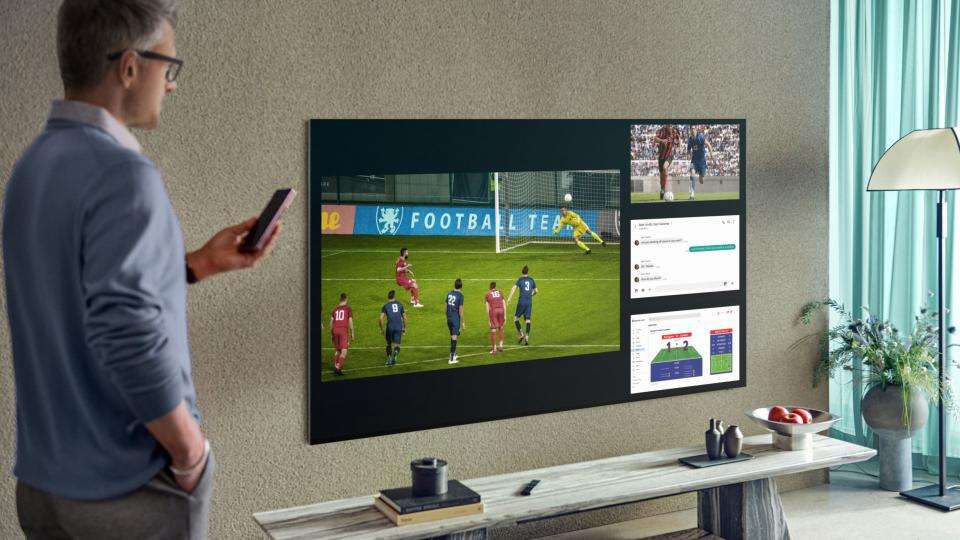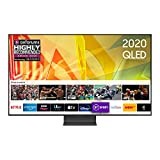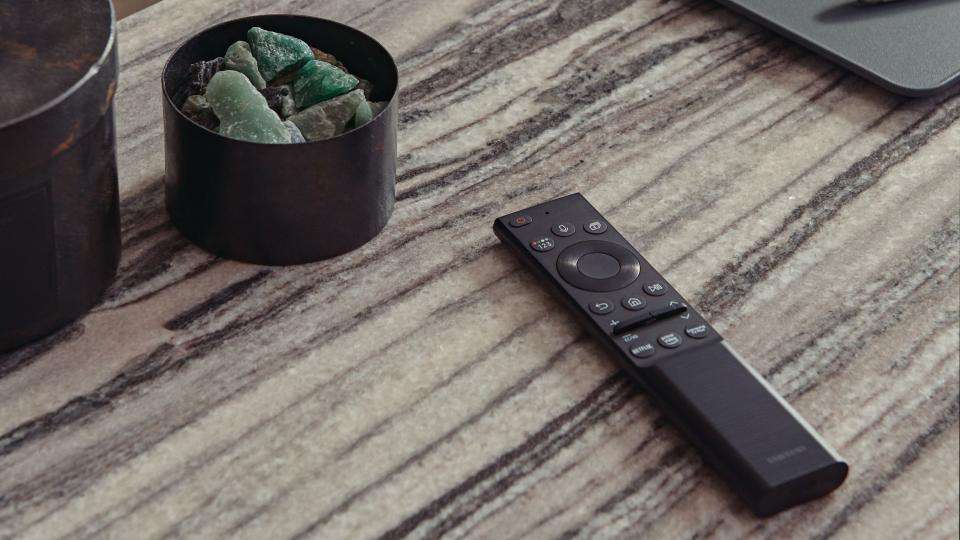Samsung announces a new line of Neo QLED 4K and 8K TVs for CES 2021
In its First Look virtual event ahead of the all-digital CES 2021, Samsung has unveiled a brand-new display technology for its latest flagship 4K and 8K QLED TV sets. The 4K Q90A and the 8K Q900A will be Nano QLED sets, Samsung’s term for its latest “quantum leap” in display technology.
These Nano QLEDs will make use of a new proprietary light source called Quantum Mini LED, which is in turn controlled by Samsung’s Quantum Matrix technology and a new Neo Quantum Processor, the follow-up to the Quantum Processor 4K/8K chips seen in recent TVs.
So, what’s actually different about Neo QLED and why is it better?
More LEDs, more colours and more contrast
According to Anant Baijal of Samsung’s Advanced R&D Group, the Neo QLED represents a “gigantic leap in picture, design and sound quality” that will “redefine what a TV can do”. To create the Neo QLED display, Samsung has radically reduced the size of the LEDs that make up the display, bringing them down to around one-fortieth the height of a standard LED. As a result, Samsung can fit in around ten times the number of Mini LEDs as were seen on previous QLED models, densely packed into layer upon layer of “incredibly thin microlayers”.
This allows for more precise control of the TV’s lighting to improve accuracy and reduce blooming, and it also boosts the luminance scale up to 12-bit with 4,096 steps, meaning improved contrast levels that could potentially compete with self-emissive OLED displays – something regular QLEDs haven’t been able to do up to this point. The Q90A and Q900A’s Neo Quantum Processor will also enhance the upscaling capabilities of Samsung’s new QLED line, using the AI power of up to “sixteen neural networks” to “optimise picture quality to 4K and 8K picture output regardless of the input quality”.
Neo QLEDs will be even smarter
In addition to improved picture quality, the Neo QLED flagship models will make use of numerous smart home features that seek to improve users’ quality of life, much of it catered towards our new era of remote working. Samsung’s Smart Trainer is on hand to help you with your form during home workouts, there’s a built-in USB camera that “follows you” around the room while taking part in video calls and you can also access and work on files with the PC-on-TV Samsung DeX function.

Game Bar could be of interest to gamers wanting to monitor their PC or console’s performance, change the aspect ratio to increase the field of view or toggle the height and angle to suit their eye level. Meanwhile, the customisable Multi-View feature should come in handy for sports fans keen to keep an eye on multiple matches at once, while also monitoring their social media feeds simultaneously.
Release date and price
There’s no word yet from Samsung on pricing and release dates for the Q900A or the Q90A so, for now, we’re only left with guesswork. Samsung’s top-end 4K TV for 2020, the Samsung Q95T , launched at £1,799 for the 55in model and ran all the way up to £5,299 for the 85in variant.

As for the flagship 8K Q950TS, it would have set you back as much as £10,799 when it launched back in mid-2020. On the bright side, Samsung’s 2020 models were slightly cheaper at launch than their 2019 equivalents, so there’s some hope that the Q90A and Q900A will sit in a similar price range to the Q95T and Q950TS.
What else is new from Samsung this year?
As expected, there were plenty of other products revealed over the course of Samsung’s First Look virtual event. Of its latest innovations, the South Korean brand is most proud of its revamped The Wall series. This modular, wall-mounted microLED TV will initially be available in 99in and 110in sizes, with smaller variants due to be released later in the year.

It also announced refreshed lines of its lifestyle TV ranges, including The Frame, The Serif and The Terrace, as well as a new The Premiere projector. Additionally, a solar-powered remote and overhauled, sustainable packaging and production materials were revealed as part of Samsung’s “Going Green” initiative.
Keep checking in with us for the latest in TV news over the coming days as there’s plenty more to come from the virtual show floor of CES 2021.
Your comment